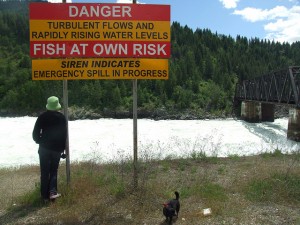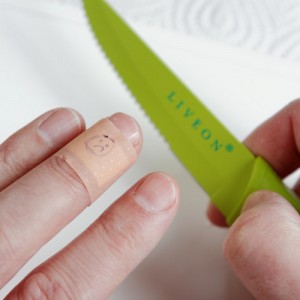Chapter 11. Risk Management and Legal Liability
Don Webster
Learning Objectives
- Define the concepts of risk and risk management
- Apply the four steps of a risk management process to a tourism operation
- Identify potential liabilities and develop mitigation strategies to minimize the impact of these
- Identify the four elements of a negligent action
- Describe the components of a valid contract under Canadian contract law
- Appraise the statutory requirements for a tourism or hospitality operator as required in BC
- Demonstrate a working knowledge of occupational health and safety in tourism
Overview
This chapter examines the concepts of risk management and legal liability in tourism and hospitality. We’ll review theoretical risk concepts and practical risk management applications while exploring applicable areas of statute, tort, and contract law. Insurance and occupational health and safety are also discussed. Examples are provided that apply to principles of risk management for tourism and hospitality operations. Please note that the advice and definitions provided in this chapter are general, and should not be relied on in the case of legal action. They will, however, provide a foundation for working in the tourism industry, and for further study.
What is Risk Management?
Risk is defined as the potential for loss or harm (Canadian Tourism Commission [CTC], 2003a). This could be a financial loss, damage to property, or injury to workers or guests. Understandably, most tourism operators are interested in avoiding these impacts to their operation, which is why risk management is needed.

Risk management refers to the practices, policies, and procedures designed to minimize or eliminate unacceptable risks (Cloutier, 2000; CTC, 2003a; Heshka & Jackson, 2011). Depending on the type of operation and the industry undertaking the risk management process, these may vary greatly. Consequently, it is helpful to think of risk management as being a process of determining the exposure to risk, and then initiating action to either minimize or eliminate the risk (Enterprise Risk Management, 2004).
Why Practise Risk Management?
There are two main reasons for tourism operators to practise risk management: to avoid injury to guests and employees, and to protect their business operations from financial or physical ruin.
Keeping guests and employees safe is a moral and ethical responsibility of operators and includes avoiding both emotional and physical harm. Protecting business operations includes protecting against damage to property, damage to reputation, and any financial impacts occurring from litigation (Centre for Curriculum, Transfer, and Technology [CCTT], 2003a). By practising this twofold approach, operators demonstrate that they are are prioritizing the health and safety of individuals, while still taking steps to protect the operational sustainability of their company.

On a larger scale, practising effective risk management can be seen as an important business skill. The Canadian Tourism Commission (2003a) suggests that risk management:
- Reduces the likelihood of an unwanted and unplanned event
- Reduces the consequences of the event
- Enhances your ability to access comprehensive and cost-effective insurance
Risk management can be undertaken at any scale. Individuals, companies, societies, communities, cities, regions, and even governments can follow the process in order to protect themselves from risks, which may range from company-specific risks such as disruption of revenue to significant international risks such as climate change and civil disturbances.
Some risk management initiatives are easier than others; they are required by law and enforced by government agencies. For example, companies providing public transportation (such as passenger transport in a bus) have clearly defined requirements as set out by their local motor vehicle branch in government. They are required to use appropriately licensed drivers, submit to commercial vehicle inspections, and insure their vehicles as required. Failing to adhere to these standards may result in suspension of operating privileges, fines, or even imprisonment.
However, other aspects of risk management are not regulated so extensively. This is characteristic of the majority of tourism and hospitality activities offered in Canada today. Operators offer services to the general public and self-regulate in terms of safety. If injury to a guest occurs, and that guest feels that he or she has grounds for a financial claim, that person can initiate a lawsuit against the tourism operator. If this claim is found valid in court, then the tourism operator may have to pay a large financial settlement to that claimant.
In short, tour operators must comply with applicable statutory requirements and be sure to self-monitor to determine if the standard that they are operating at is acceptable to society and their peers. Failing to do so may result in a range of consequences including fines, suspension of operations, or a lawsuit. Clearly, risk management for tourism and hospitality is a complicated process.
Concepts of Risk
Before we proceed deeper into an examination of the risk management process, let’s look at three theoretical concepts of risk: real risk, perceived risk, and inherent risk.
Real risk is the actual statistical likelihood of an incident occurring. This is established through reviews of statistics and other relevant data, and by an analytical process and use of expertise in the field. There is little ambiguity or subjectivity in real risk (CTC, 2003a).
Perceived risk is the perception of risk by those undertaking or evaluating something; it may vary greatly based on their level of apprehension, anxiety, or experience with the specific risk. Perceived risk can also vary greatly from the real risk of an activity; it can be higher or lower than the actual risk. Successful management of perceived risk may include operators promoting the risk of activity as high, even if in reality the risk is minimal. This strategy can ensure successful delivery of an exhilarating, challenging experience while remaining safety conscious (Dowling, 1986).
Inherent risk is the risk that must exist for the activity to occur; examples include the risk of drowning when swimming and the risk of falling during skiing. It is impossible to eliminate inherent risk from these activities because it would preclude participating in them. However, operators should take steps to minimize inherent risk; this could include, for example, providing appropriate safety equipment for guests, training staff, and informing participants of the hazards of the activity (CCTC, 2003b).

Risk Management Process
A variety of risk management models exist, all of them generally a variation on the same theme, with each having a slightly different analytical approach. Here we outline the model from the Canadian Tourism Commission for small and medium enterprises. It has four stages: risk identification, risk analysis, risk control, and risk treatment (CTC, 2003a).
Risk Identification
The first stage of the risk management process is systematically identifying risks facing the organization. This step is often referred to as risk assessment. An organization can identify risks in the following ways (CTC, 2003a, p. 6):
- On-site inspections and discussions with management and staff
- Review of products, services, processes, and contracts
- Review of historical activities and losses
- Identification of possible risk scenarios
Once an exhaustive list of the risks is compiled, the next step is to ensure a thorough analysis occurs.
Risk Analysis
A typical risk analysis compares the probability (frequency) of any risks occurring by the consequence (severity) if they do occur. This can be done either in a qualitative or quantitative manner, with either numerical values or descriptors applied. For example, an analysis of the risk of the catastrophic failure of a ski lift at a resort resulting in passengers falling to the ground would likely indicate that the probability of this incident occurring is low due to required safety checks and maintenance. However, the consequence would likely be high, considering there could be many visitors involved in a significant fall, resulting in multiple casualties.
Operators need to respond (through risk control, see below) if the analysis determines any of the following: 1) the probability of the risk occurring is unacceptable; 2) the consequence of the risk occurring is unacceptable; or 3) the combined impact of the probability and consequence is deemed unacceptable (Cloutier, 2000).

Risk Control
Once the risks are identified and analyzed, the next step is implementing mitigation strategies for any unacceptable risks. This step is risk control, and it comprises two primary concepts: exposure avoidance and loss reduction.
Exposure avoidance involves any mitigation strategies used to avoid the exposure to the risks. Examples are eliminating particularly hazardous activities or services, avoiding certain areas due to environmental threats, or changing a tour destination due to political unrest.
Loss reduction is slightly different; it assumes that you have acknowledged the risk of a particular activity or service, and choose to continue to offer it, but will take steps to mitigate the severity of damage that may occur (CCTT, 2003a). An example is requiring all participants in a ski lesson to wear helmets; the risk of falling still exists, but you have taken action to reduce the severity of any fall.
Risk Treatment
Failing the ability to control all risks identified, the next step in the process is risk treatment. This includes the concept of risk transfer and risk retention. Risk transfer refers to the transfer of responsibility to another party, either contractually or by insurance. Risk can be transferred through contract either by entering into a contract for service, or by requiring participants to sign a waiver. Risk is transferred through insurance by paying premiums to an insurer, wherein they absorb the financial risk of an accident. Risk retention refers to the level of risk that is retained by the company through a conscious decision-making process. Examples of this may include the decision to increase the size of insurance deductible to use, the use of self insurance, or consciously not transferring risks due to an inability to do so (CTC, 2003b).
Spotlight On: Canadian Legal Information Institute
It’s helpful to familiarize yourself with past legal rulings to understand the current context for tourism and hospitality risk management and the law. Managed by the Federation of Law Societies of Canada, the Canadian Legal Information Institution (CanLII) is a non-profit organization with the goal of making Canadian law accessible online for free. Its website provides access to court judgments, tribunal decisions, statutes, and regulations from all Canadian jurisdictions. For more information, visit the Canadian Legal Information Institute website www.canlii.org
Tort Law and Negligence

Tort law in Canada refers to the “body of the law which will allow an injured person to obtain compensation from the person who caused the injury” (Tort Law, n.d., ¶ 1). Two categories of torts exist: intentional and unintentional. Intentional torts consist of assault, battery, trespass, false imprisonment, nuisance, and defamation. Unintentional torts primarily consist of negligence (Tort Law, n.d.). In tourism, most lawsuits involve negligence, with one party seeking financial compensation.
Take a Closer Look: Crocker v. Sundance Resorts
The ruling in Crocker v. Sundance Resorts provides an interesting examination of the elements of a negligent action. The case describes an incident where a ski/snowboard resort hosted a tubing competition and allowed an intoxicated customer to participate. An accident occurred, and the customer was paralyzed as a result. The resort was found to be negligent as it failed to maintain an appropriate standard of care. Damages were awarded to plaintiff (the person suing) but were reduced for “contributory negligence on behalf of the plaintiff,” which means the injured person was also held partly responsible. The ruling can be found here: Crocker v. Sundance Resorts: www.canlii.org/en/ca/scc/doc/1988/1988canlii45/1988canlii45.html
Tourism operators must consider their exposure to unintentional torts, specifically negligence. Negligence can be defined as “the omission to do something which a reasonable man, guided upon those considerations which ordinarily regulate the conduct of human affairs, would do, or doing something a prudent and reasonable man would not do” (Cloutier, 2000, p. 13). In other words, if the safety standards of a business fall below an established standard and injury occurs as a result, the injured person may sue for negligence.
Pursuing legal action against an operation for negligence is a long process that needs to be initiated by the person who has been injured. To be successful, four elements have to be proved: injury, duty to care, breach in the standard of care, and causation.
The first of these, injury, means that it must be shown that the person suing did, in fact, receive an injury that resulted in damages. This might be physical damage, such as a bodily injury, or it may be damage to property.
The concept of duty to care refers to the relationship between the plaintiff and the defendant, a relationship requiring the defending party to care for the plaintiff. For example, in tourism, there exist relationships between hotels and guests, tour guides and tour participants, and instructors and students. The question to ask is whether it is expected that one person or organization in the relationship is responsible for ensuring the other person is safe from reasonable harm. Is a tour guide responsible for the safety of the participant? If an operator answers yes, chances are that a duty to care exists.
Take a Closer Look: The Steveston Hotel Case
The Steveston Hotel Case, made famous in 1999, still serves as a warning to establishments serving liquor. A hotel was held liable for 50% of the damages that occurred when it permitted a patron to drive home drunk. The case demonstrated that the hotel had a duty of care to stop serving an already intoxicated person, and to prevent the intoxicated party from driving. You can read more details of the case by visiting Steveston Hotel Case: www.go2hr.ca/training/serving-it-right/responsible-beverage-service/hotel-held-liable-drunk-driving-accident
Once a duty has been established, the next step is proving negligence is to show that there was a breach in the standard of care. This means that the defendant failed to work to the recognized standard. The standard may be established by professional organizations or simply by the “reasonable person test,” which is an assessment of what other individuals or operations would have done in the same situation. Tourism operators are responsible for determining what current standards in industry are; not being aware of industry standards is not be an acceptable defence in the courts.
The last element that needs to be proved is causation. This means that there must be a strong link between the actions of the defendant that caused injury to the plaintiff. For example, if a ski resort failed to clear the ice off its pathways, and someone fell and was injured on the icy path, it is likely that causation could be proved (Heshka & Jackson, 2011).
Take a Closer Look: Bindseil v. McDonald’s Restaurants
The ruling in Bindseil v. McDonald’s illustrates the importance of causation. While Mr Bindseil developed colitis (a serious stomach condition) in the time following a meal at a McDonald’s restaurant, he was unable to prove that the meal had caused the colitis because the testimony of his medical experts was countered with experts testifying for McDonald’s. The ruling can be found here: Bindseil v. McDonald’s Restaurants: www.canlii.org/en/bc/bcsc/doc/2009/2009bcsc61/2009bcsc61.html
Contract Law

Contracts are frequently used by tourism operators. Common types of contracts include contracts for service, employment agreements, rental agreements, and legal releases (waivers) (Cloutier, 2000). Given the importance of all of these types of agreements, it is vital that operators use documents that are valid and clearly based in contract law. For a contract to be valid and legally enforceable, it must contain all of the following components: an offer and acceptance, consideration, an intent to enter into a legal relationship, and sufficient capacity (understanding) of those involved involved (Longchamps & Wright, 2007). Each of these is described below.
Offer and acceptance means that the “offer” (e.g., a rental car agency will advertise a car for rent) must be clear, unequivocal, and include all of the important and relevant terms in the contract. The acceptance also must be clearly expressed (e.g., the renter agrees to rent the car according to the terms and conditions offered by signing the contract). Once the offer is accepted, it becomes a promise with both parties being bound by the terms of the contract.
Consideration refers to the value that is exchanged between parties in the contract, such as money or services (e.g., the renter pays for use of the rental car). Sometimes consideration is waiving your legal rights for a right to participate in an activity.
An intent to enter into a legal relationship means that the individuals signing are doing so deliberately and understand that if they do not do what they have agreed to do they will be in a breach of their contract.
Capacity refers to the ability of individuals to enter the contract. If a person signing a contract does not have sufficient capacity, the contract will not be binding. The most common reason for not having sufficient capacity is age. In most cases, a person who has not reached the legal age of majority cannot contract with someone else. Other requirements for capacity include having sufficient mental capacity, and being the authorized signatory (the person with the authority to sign on behalf of an organization) (Longchamps & Wright, 2007).
The implications of contract law to the tourism and hospitality industry are extensive; any contact signed needs to have unambiguous terms, be clearly accepted, have an exchange of value, and be signed by an adult with full mental capacity or by an authorized signatory of the organization. Failing to adhere to any of these conditions will likely result in the contract being considered void.
Waivers
For many tourism operators, waivers are considered a key part of their risk management process. Waivers are particularly important in the adventure, outdoor, and sport tourism sectors where there is a greater risk of personal injury, and they are an effective risk management tool.
Take a Closer Look: Sample Waiver
Waivers are frequently made available by businesses online. To view a sample of a waiver for a snowcat operator, visit Sample Waiver: http://valhallapow.com/about/waiver-form
A waiver is a form of contract that transfers acceptance of the risk to the participants by requiring them to acknowledge the risks present in the activity. It also requires participants to waive their right to take legal action if an accident occurs. Despite their effectiveness, there have been cases where waivers have failed to protect an organization, often because the waiver was poorly written or delivered incorrectly (Importance of Waivers in Recreation Programs, n.d.).
To be effective, a waiver should include four components. First, it should clearly outline the risks in the activity — voluntary acceptance of risk. Second, it should waive the participant’s right to pursue legal action against the tourism operation in case of negligence — waiver of rights. Third, it should be relatively short and easy to read, be easily recognized as a legal document, and include a place for signature that can be witnessed by a company employee. Fourth, it should be signed by participants only when they have been given ample time to read and understand it well in advance of the event or activity. Failure to provide enough time may be interpreted by the courts as signing under duress, which would make the contract void and mean that the waiver could not be used as a defence against negligence (Importance of Liability Waivers in Recreation Programs, n.d.; Karroll v. Silverstar Resorts, 1988).
Take a Closer Look: Loychuk v. Cougar Mountain Adventures Ltd.
This case illustrates the effectiveness of a waiver program for a tourism operation. It involves two participants in a zip-line tour in Whistler, BC. A mistake made by an employee of Cougar Mountain Adventures resulted in the participants colliding on the zip-line at high speed. Negligence was admitted, but because of the effectiveness of the waiver in both the way it was drafted and delivered, the courts dismissed the claim. The ruling can be found here: Loychuk v. Cougar Mountain Adventures Ltd.: www.canlii.org/en/bc/bcsc/doc/2011/2011bcsc193/2011bcsc193.html
Statutory Requirements for Tourism and Hospitality in BC
All tourism companies must adhere to the laws in the jurisdiction in which they operate. In BC there are certain statutes (laws) that are particularly relevant to tourism and hospitality. These are outlined in brief below.
Hotel Keepers Act
The Hotel Keepers Act allows an accommodation provider to place a lien on guest property for unpaid bills, limits the liability of the hotel keeper when guest property is stolen and/or damaged, and gives the provider the authority to require guests to leave in the event of a disturbance (Hotel Keepers Act, 1996).
Take a Closer Look: Hotel Keepers Act
The Hotel Keepers Act is posted online as a resource for managers and staff at BC accommodation properties. Take a closer look at the act by visiting Hotel Keepers Act: http://www.bclaws.ca/civix/document/id/complete/statreg/96206_01
Hotel Guest Registration Act
The Hotel Guest Registration Act requires hotel keepers to register guests appropriately, which includes noting a guest’s arrival and departure dates, home address, and type and licence number of any vehicle (Hotel Guest Registration Act, 1996).
Liquor Control and Licensing Act
The sales and service of alcohol in BC hospitality establishments is highly regulated by the provincial government through the Liquor Control and Licensing Branch (LCLB).
Spotlight On: BC Liquor Control and Licensing Branch
The Liquor Control and Licensing Branch (LCLB) is responsible for regulation of liquor service, private and public liquor stores, the importing and manufacture of alcoholic products, and distribution of those products. For more information, visit the Liquor Control and Licensing Branch: www.pssg.gov.bc.ca/lclb/index.htm
Hospitality operators and their staff must be aware of fundamental requirements of the Liquor Control and Licensing Act, which defines the ways in which alcohol can be made, imported, purchased, and consumed in BC. These include (British Columbia Ministry of Justice, 2015):
- The legal drinking age in BC (19 years of age)
- Identification requirements (one piece of government-issued I.D. and a supplementary I.D. with photo or signature)
- Restrictions on minors: entering pubs and bars (not permitted; exceptions in certain circumstances)
- Serving alcohol in a restaurant (permitted as of age 16 provided they do not mix drinks or open bottles)
- Consumption of alcohol in public places such as parks and beaches (not permitted unless specified as part of an event or festival)
- Bringing a bottle of wine to a restaurant (permitted, with restrictions)
As these requirements change frequently, it is the responsibility of operators and staff to keep up-to-date on the particulars of liquor legislation.
Take a Closer Look: BC Liquor Law Basics
While not comprehensive, this list of basics will help new entrants to the hospitality industry understand the fundamentals of liquor service and sales law in BC. To view, visit BC Liquor Law Basics: www.pssg.gov.bc.ca/lclb/LLinBC/basics.htm
Travel Industry Regulation
As part of the Business Practices and Consumer Protection Act, the Travel Industry Regulation outlines the requirements for licensing, financial reporting, and the provision of financial security for travel sales. Additionally, it requires licensed travel agents to contribute to the Travel Assurance Fund, which compensates consumers if a travel provider is unable to provide the purchased product due to insolvency (Travel Industry Regulation, 2009).
Occupiers Liability Act
The Occupiers Liability Act specifies the responsibilities of those that occupy a premise such as a house, building, resort, or property to others on their property. It includes a definition of a premise, as well as the duty of care the occupier has to care for the condition of the premises, activities on the premises, and the conduct of other people (third parties) on the premises. It also outlines when occupiers liability is excluded, such as on Crown land or private roads (Occupiers Liability Act, 1996).

Take a Closer Look: Cempel v. Harrison Hot Springs Hotel
The legal ruling in this case highlights the responsibility of a hospitality organization under the Occupiers Liability Act to keep premises in safe condition even for trespassers. Ms. Cempel had trespassed onto hotel property, fell into a particularly dangerous hotspring, and suffered severe burns as result. The hotel was found partly responsible for her injuries and was required to pay damages. The ruling can be found here:
Cempel v. Harrison Hot Springs Hotel: www.canlii.org/en/bc/bcca/doc/1997/1997canlii2374/1997canlii2374.html
Resort Associations Act
The Resort Associations Act was developed to provide opportunities to fund a variety of promotional services for a resort community. It outlines the organizational structure for the community and allows funding through member fees for activities such as marketing, planning special events, developing signage, and acting as a central booking agency (Resort Associations Act, 1996). To meet the criteria for this Act, resort areas are required to be within a designated resort region, have alpine ski lift operations, and provide year-round recreational facilities or commercial overnight accommodation (Government of BC, 2015).
Spotlight On: The BC Laws Website
All BC statutes are available online at the BC Laws website, operated by the Government of British Columbia. For more information, visit the BC Laws website: www.bclaws.ca
Insurance
Obtaining and maintaining appropriate insurance coverage is an important part of the risk management process. Insurance transfers the financial risks to a third party — the insurance company. Operators pay premiums that are established by the insurer based on the risk of the coverage. If the likelihood of claims is high, the premiums will be higher. There are a variety of reasons why a tourism company requires insurance: to control the risk of offered activities, to meet statutory requirements, because industry partners require it, to protect business and assets, and to protect employees (CTC, 2003b, p. 3).
Common types of insurance policies required by tourism operators include commercial general liability (CGL), property insurance, and accounts receivable insurance. CGL insurance can be one of the most important coverages, but unfortunately it can also be one of the most difficult and expensive to obtain. CGL policies cover operators for liability if an accident occurs, including bodily injury, medical payments, and personal injury. Property insurance provides coverage for the financial risks associated with loss of assets such as buildings, equipment, and merchandise. Accounts receivable insurance can cover a large proportion of account receivables if a customer fails to pay due to default or insolvency, thus providing a considerable safeguard to any tourism operation (CTC, 2003a; CTC, 2003b; Destination BC, 2013).
Insurance does not prevent accidents from happening, nor does it make an operation safer. It does, however, provide a reasonable amount of financial protection if an accident does happen.
Some insurance coverage is optional, and operators may decide to self-insure on assets such as property and accounts receivable. Self insuring is the practice of an operation retaining the risk rather than transferring through insurance; it may be a conscious choice or a necessity based on lack of available coverage.
Other insurance coverage may be needed, such as motor vehicle insurance or liability insurance (required by most industry partners and some statutory requirements). In the end, the tourism operator must determine what coverage is required and what optional additional coverage is desired.
Spotlight On: go2HR Health and Safety Information
As part of its mandate to support human resources best practice in BC’s tourism and hospitality industry, go2HR works in the field of occupational health and safety. In partnership with WorkSafeBC, it offers the Certificate of Recognition (COR) in safety. For more information, visit go2HR Health and Safety Information: www.go2hr.ca/health-safety
Occupational Health and Safety in Tourism
So far we have primarily discussed risk management from a client/guest perspective. However, substantial effort in a tourism and hospitality operation must be put into managing worker safety as well. Responsibilities for worker safety are generally legislated by occupational health and safety laws, which clearly dictate safety standards. Employers who fail to adhere to these standards may be penalized or fined (WorkSafeBC, 2015a).
WorkSafeBC is the provincial organization for occupational health and safety in BC. It is an independent agency managed by a board of directors who are appointed by government. The mandate of WorkSafeBC is to (2015b, ¶ 3.):
- Promote the prevention of workplace injury, illness, and disease
- Rehabilitate those who are injured and provide timely return to work
- Provide fair compensation to replace workers’ loss of wages while recovering from injuries
- Ensure sound financial management for a viable workers’ compensation system
There was an average of 6,505 tourism and hospitality WorkSafeBC claims each year from 1998 to 2007, with approximately $32,100,000 paid out annually (WorkSafeBC, 2015c). This included payments for physical rehabilitation as well as short- and long-term disability disbursements. To reduce these claims and protect workers, WorkSafeBC has an extensive worker safety program with educational resources and training programs available. A partnership with go2HR — the tourism and hospitality human resources organization — has been developed to raise awareness in tourism and hospitality about worker safety, particularly for young, vulnerable workers (go2HR, 2015).

The nature of tourism and hospitality often means operations need to employ a considerable number of employees; these are often entry-level positions, requiring little experience. Employers need to be cognizant of the requirements for worker safety under WorkSafeBC; failing to do so may result in fines for the operation, or far worse — workplace injuries to employees.
Spotlight On: WorkSafeBC BC Tourism and Hospitality Resources
WorkSafeBC has extensive resources for tourism and hospitality workers to avoid workplace injury. These include prevention tools for accommodation, adventure tourism, food and beverage, and events. WorkSafeBC also explains updates and changes to workers’ compensation in BC, and provides opportunities for courses and training in first aid and injury prevention. For more information, visit WorkSafeBC BC Tourism and Hospitality Resources: www2.worksafebc.com/Portals/Tourism/Home.asp
In addition to concerns about safety, employers and employees must be aware of the Employment Standards Act. This act defines the legal requirements around employment such as minimum wage, breaks, meal times, vacation pay, statutory holidays, age of employment, and leave from work (British Columbia Ministry of Labour, 2015)
Take a Closer Look: Employment Standards Act FAQs
This list of frequently asked questions provides quick answers to inquiries about employment standards in BC, including whether employers are required to pay for sick leave, time in meetings, and coffee breaks. You can read more about them at the Employment Standards Act FAQs: http://www.labour.gov.bc.ca/esb/faq.htm
Conclusion
Risk management in tourism and hospitality is complex, involving aspects of adhering to statutory requirements, taking steps to ensure occupational health and safety requirements are met, and undertaking an analytical approach to mitigating potential liabilities. Most of the actions required need to be proactive by the operators; failing to do so may result in negative impacts to reputation, damage to property, fines, lawsuits, or in the most tragic result — injury to guests or employees. Companies not only have a moral and ethical responsibility to practise effective risk management, failing to do so can result in financial ruin and the cessation of operations.
This chapter reviewed an important consideration for tourism and hospitality professionals. Chapter 12 addresses another key component of the industry in BC, Aboriginal tourism.
Key Terms
- Breach in the standard of care: failure of the defendant to work to the recognized standard
- Capacity: the ability of a person to enter into a legal agreement; depends on the age and mental state of the person (among other factors)
- Causation: a strong link between the actions of the defendant and the injury to the plaintiff
- Commercial general liability insurance: the most common type of liability insurance that provides coverage for litigation; generally, legal costs and personal injury settlements arising from a lawsuit are covered
- Consideration: the value exchanged between parties in the contract (money, services, or waiving legal rights)
- Duty to care: the relationship between the plaintiff and defendant (monetary, supervisory, custodial, or otherwise) that requires a responsibility on behalf of one party to care for the other
- Employment Standards Act: defines legal requirements around employment such as minimum wage, breaks, meal times, vacation pay, statutory holidays, age of employment, and leave from work
- Exposure avoidance: a risk control technique that avoids any exposure to that particular risk
- Hotel Guest Registration Act: requires hotel keepers to register guests appropriately, which includes noting a guest’s arrival and departure dates, home address, and type and licence number of any vehicle
- Hotel Keepers Act: allows an accommodation provider to place a lien on guest property for unpaid bills, limits the liability of the hotel keeper when guest property is stolen and/or damaged, and gives the provider authority to require guests to leave in the event of a disturbance
- Inherent risk: risk that is inherent to the activity and that cannot be removed
- Injury: proof the plaintiff did in fact receive an injury resulting in damage; can be bodily injury or property damage
- Intentional torts: assault, battery, trespass, false imprisonment, nuisance, and defamation
- Liquor Control and Licensing Act: defines the ways in which alcohol can be made, imported, purchased, and consumed in BC
- Liquor Control and Licensing Branch (LCLB): the BC government agency responsible for legislation and control of alcohol sales, service, manufacture, import, and distribution in the province
- Loss reduction: a risk control technique that reduces the severity of the impact of the risk should it occur
- Negligence: failing to meet a reasonable standard of care toward others despite being required to do so
- Occupiers Liability Act: specifies responsibilities for those that occupy a premise such as a house, building, resort, or property to others on their property
- Perceived risk: the perception of the risk level of the practice, activity, or event; varies greatly from person to person
- Real risk: the actual risk of the practice, activity, or event; generally determined by statistical evidence
- Resort Associations Act: developed to provide opportunities to fund a variety of promotional services for a community; the Act defines what it means to be a resort community
- Risk: the possibility for loss or harm
- Risk management: practices, policies, and procedures designed to minimize or eliminate unacceptable risks
- Risk retention: the level of risk that is retained by the company through a conscious decision-making process
- Risk transfer: a risk mitigation strategy where the risk is transferred to a third party through contract or insurance
- Self insuring: the practice of an operation retaining the risk rather than transferring through insurance; may be a conscious choice or a necessity based on lack of available coverage
- Travel Industry Regulation: part of the Business Practices and Consumer Protection Act that outlines the requirements for licensing, financial reporting, and the provision of financial security for travel sales
- Unintentional torts: primarily consist of negligence
- Waiver: a document used as a risk management technique where the responsibility for the risk is transferred to the participant through contract and voluntary acceptance of risk
- WorkSafeBC: BC’s occupational health and safety organization
Exercises
- What is your personal level of risk tolerance? Is it low or high? How does this change when you have responsibility for others?
- Think of a time when you have had a duty to care for someone. What was the relationship?
- Think of a tourism company you are familiar with. Develop a thorough list of all of the risks applicable to the company. Which ones concern you the most? How would you figure out which risks are of most concern?
- What are three items that should be included in a waiver for it to be effective?
- Name three types of insurance relevant to tourism operators.
- Name the four elements of a negligence action that have to be proved in the courts in order for a claim of negligence to be successful.
- Under contract law, what does the concept of capacity mean? How does it relate to the issue of minors and their ability to sign a waiver?
- List and describe four BC statutes that apply to tourism and hospitality operations.
- List five steps that you would recommend tourism operators take to protect themselves from legal action.
- Imagine you are working at the front desk of a hotel and you get a complaint that fighting and loud singing can be heard coming from a guest’s room. According to the Hotel Keeper’s Act, what steps are you required to take? What is the penalty to the hotel if you do not take the proper steps?
- Take a look at the frequently asked questions for the Employment Standards Act (see Take a Closer Look above). List three benefits of the Act for employers and employees.
Case Study: Tort Law
In January 2015, a Kamloops woman sued Sun Peaks Resort Corporation after breaking her leg on the resort’s tubing terrain. The incident took place in 2013.
In court documents, Pamela Boileau said she visited the resort with her husband and two young children to use the tube park, where, she claimed, no signs were posted restricting the age of children allowed to use the facility. She then took a ride with her husband and their baby.
According to her filing, “the ride was very fast and bumpy and the tubes went high on the berm and then hit a big bump and the plaintiff’s infant daughter went flying out of her tube” (Petriuk, 2015). In order to help her daughter, Boileau stopped the tube she was riding in abruptly and broke her leg in multiple places.
According to Boileau, the next day the resort erected signage prohibiting children under four years of age from using the tubing park. She sued for general damages, special damages and interest, and money for past and future health care. The lawsuit named Sun Peaks Resort Corporation and four employees in the claim.
Based on this description of the claim, as circulated in the media, answer the following questions to the best of your ability:
- What evidence is there that staff at the resort had engaged in the four stages of risk identification? For each stage, note what the resort could have done differently.
- What were the real, perceived, and inherent risks of using the tube park? How would these be different for an adult participating in tubing and a small child?
- In your opinion, has the plaintiff established the following? Why or why not?
- Injury
- Duty to care
- Breach in the standard of care
- Causation
- Would a waiver have made a difference? Explain why or why not.
- Search the internet to find the details of this case and any updates on what happened with the parties involved. How did the outcome differ from what you expected?
- What is your personal feeling about who is responsible for the injury in this case? How does that differ from what the law has to say?
References
British Columbia Ministry of Justice. (2015, April 15). Law basics – Liquor licensing in BC – Liquor Control and Licensing Branch. Retrieved from www.pssg.gov.bc.ca/lclb/LLinBC/basics.htm
British Columbia Ministry of Labour. (2015). Employment Standards Act. Retrieved from http://www.bclaws.ca/EPLibraries/bclaws_new/document/ID/freeside/00_96113_01
Canadian Tourism Commission (CTC). (2003a). Risk management guide for tourism operators. Ottawa, ON: Fitzgerald, P.
Canadian Tourism Commission (CTC). (2003b). Insurance tutorials for outdoor tourism operators. Ottawa ON: Valade, G.
Centre for Curriculum, Transfer and Technology (CCTT). (2003a). Health and safety in adventure tourism [PDF]. Retrieved from: http://bhudak.com/Health%20and%20Safety%20Guide.pdf
Centre for Curriculum, Transfer, and Technology (CCTT). (2003b). Risk management for outdoor programs [PDF]. Retrieved from: www.nic.bc.ca/continuingeducation/pdf/supply_lists/Risk%20Guide%20for%20Students.pdf
Cloutier, R. (2000). Legal liability and risk management in adventure tourism. Winnipeg, MB: Hignell Printing.
Destination BC. (2013). Tourism fundamentals guide. Retrieved from: www.destinationbc.ca/Programs/Guides-Workshops-and-Webinars/Guides/Tourism-Business-Essentials-Guides.aspx#.VLXXlb5JXHM
Dowling, G. (1986). Perceived risk: The concept and its measurement. Psychology & Marketing, 3(3), 193-210.
Enterprise Risk Management. (2004). A practical guide to risk assessment. [PDF] Retrieved from: hwww.pwc.com/en_us/us/issues/enterprise-risk-management/assets/risk_assessment_guide.pdf
go2HR. (2015). Health & safety. Retrieved from www.go2hr.ca/health-safety
Government of BC. (2015). British Columbia resort associations. Retrieved from www.cscd.gov.bc.ca/lgd/gov_structure/resort_associations/index.htm
Heshka, J. & Jackson, J. (2011). Managing risk: Systems planning for outdoor adventure programs. Palmer Rapids, ON: Direct Bearing Incorporated.
Hotel Guest Registration Act. (1996). Retrieved from www.bclaws.ca/civix/document/id/complete/statreg/96205_01
Hotel Keepers Act. (1996). Retrieved from www.bclaws.ca/civix/document/id/complete/statreg/96206_01
Importance of Liability Waivers in Recreation Programs, The. (n.d.). Retrieved January 14, 2015, from www.sms.bc.ca/2012/03/the-importance-of-liability-waivers-in-recreation-programs/
Karroll v. Silverstar Resorts. (1988). Canlii 3094 (BCSC). Retrieved from www.canlii.org/en/bc/bcsc/doc/1988/1988canlii3094/1988canlii3094.html
Longchamps, D. & Wright, B. (2007). Canadian hospitality law, liabilities, and risk. [PDF] Toronto, ON: Nelson Education. Retrieved from www.longchamps3e.nelson.com/instructor/03Ch03.pdf
Occupiers Liability Act. (1996). Retrieved from www.bclaws.ca/civix/content/complete/statreg/667588372/96337/?xsl=/templates/browse.xsl
Petriuk, J. (2015, January 16). Woman who broke leg on tube ride sues Sun Peaks resort for negligence. The Vancouver Sun. Retrieved from www.vancouversun.com/news/Woman+broke+tube+ride+sues+Peaks+resort+negligence/10735423/story.html#ixzz3POnvmUJb
Resort Associations Act. (1996). Retrieved from www.bclaws.ca/civix/document/id/complete/statreg/96320_01
Tort Law – An Introduction. (n.d.). Retrieved January 14, 2015, from www.duhaime.org/LegalResources/TortPersonalInjury/LawArticle-72/Tort-Law–An-Introduction.aspx
Travel Industry Regulation, Business and Consumer Protection Act. (2009). Retrieved from www.bclaws.ca/civix/document/id/complete/statreg/296_2004
WorkSafeBC. (2015a). Statistics for tourism & hospitality. Retrieved from www2.worksafebc.com/Portals/Tourism/Statistics.asp?ReportID=22495&_Type=Statistics-for-Tourism-Hospitality&_Title=General-Tourism
WorkSafeBC. (2015b). Our mandate. Retrieved from www.worksafebc.com/about_us/our_mandate/
WorkSafeBC. (2015c). Accident investigations. Retrieved from www2.worksafebc.com/Topics/AccidentInvestigations/Home.asp
Attributions
Figure 11.1 Turbulent Flows by Curtis Perry is used under a CC BY-NC-ND 2.0 license.
Figure 11.2 Larry O’Brien Verdict press core-0219 by David Carroll is used under a CC BY 2.0 license.
Figure 11.3 Not a good thing to move from a hotel room to a hospital room by Canadian Pacific is used under a CC BY-NC 2.0 license.
Figure 11.4 Carabiner by Alberto is used under a CC BY-SA 2.0 license.
Figure 11. 5 2014 – Vancouver – Red Spring – Provincial Law Court Plaza by Ted McGrath is used under a CC BY-NC-SA 2.0 license.
Figure 11.6 Day 207: I’ve Contracted An Agreement by Juli is used under a CC BY-NC-ND 2.0 license.
Figure 11.7 Motel No Mo’ by Jerry Bowley is used under a CC BY-NC-SA 2.0 license.
Figure 11.8 Autsch !!! by Franz Walter is used under a CC BY-NC-SA 2.0 license.

